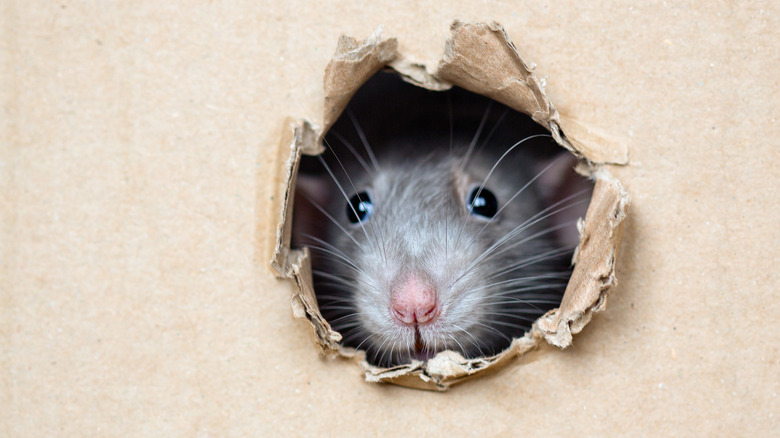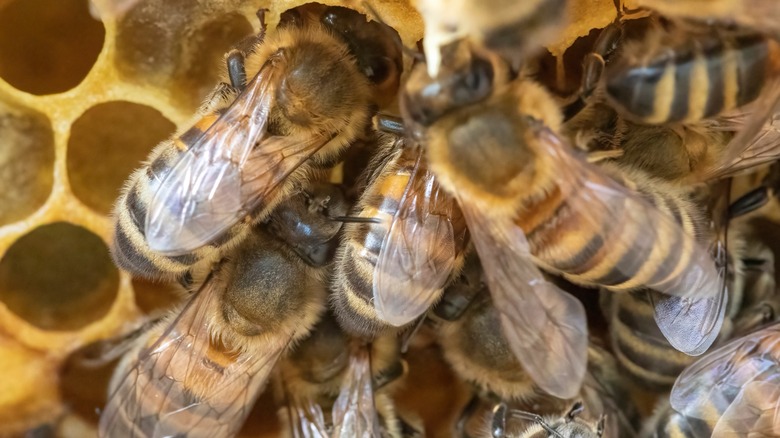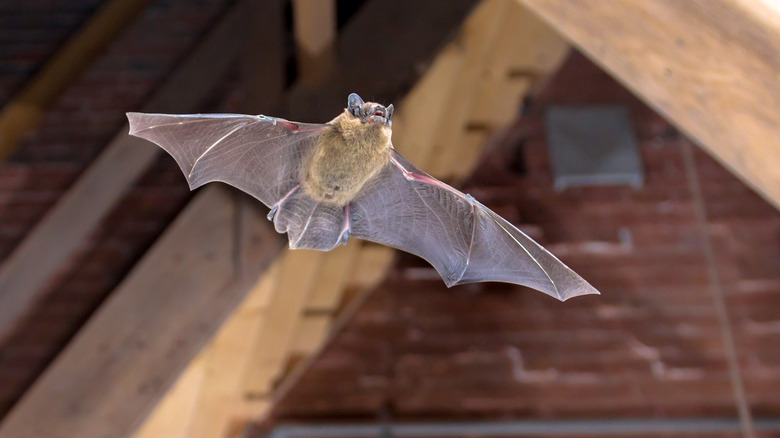How To Tell If Your Walls Are Full Of Unwanted Pests
One of the last things homeowners or renters want is an animal that has taken up residence in the walls of their house. The sounds, telltale evidence, and visual sightings inside are enough to keep you up at night and on high alert. If the creatures are in the walls, family and friends carrying disease and causing damage may not be far behind. Prime mammal offenders include mice, rats, squirrels, chipmunks, and even bats. Stinging insects and wood-eating ones may also make themselves at home in your walls. By the time you recognize the signs, damage may already have occurred. Compounding the problem are insurance companies, which do not always approve coverage for such harm, according to Western Exterminator.
Proactively denying the animals and bugs sustenance, shelter, and access are important steps in your fight against the wall intruders, per the Building America Solution Center. Recognizing the signs of a pest infestation is also critical. Squeaks, scratching sounds, droppings, unexplained debris, and odd smells are some of the tip-offs that your walls may be harboring unwanted guests. Ignoring the problem is a non-starter, but the questions remain: How can you be certain your walls have been infiltrated, and will a do-it-yourself approach succeed in ridding your home of the pests?
Signs of pest trouble
Your home is especially vulnerable during seasonal changes or during the breeding season, explains Twin Forks Pest Control, and most any animal can breach your walls. Nocturnal noises within, described as skittering, scratching, squeaking, or chirping, may be coming from a rodent. If they stop and start, it's worrisome, and a call-and-response pattern may be a sign of trouble, according to Pest Pointers.
Chewing sounds may be detected in the walls as insulation is gnawed on by mice. It's also possible to feel animal vibrations if you place your palm against the surface of the hiding place, per Batzner Pest Control. A noise-making rodent is apt to go quiet if you knock on the wall. Conversely, if you hear buzzing and tap, and the sounds intensify, it likely would be coming from a honeybee nest. Seepage from a large nest in the wall will also be a giveaway.
An odor may also be what alerts you to the presence of a pest in the wall. Rodents will leave a noticeable ammonia trail from their urine, and also leave grease tracks as they make their rounds. Their droppings are redolent and may also be visible. A specimen may die and decompose in the walls, air ducts, or crawl spaces. Dead roaches or appropriately named stink bugs may also produce other suspicious odors.
More evidence of pests
A stench coming from a wall may be the result of a squirrel nest, per American Pest Pros. The dreaded termite is another squatter that might be inside of your walls, and they leave their calling card in various ways. How To Murder Pests describes pinholes appearing in the wall, tubular trails, and "termite dust." If the wall is tapped and sounds hollow, you may have termite trouble.
A bat (more accurately, bats) could also be guesting in your walls. They're generally quiet and elusive, but might make their presence known if startled. You can hear them squeak or scratch as they crawl. The nighttime flyer might also be spotted leaving your house after sunset, and Get Bats Out says they might be part of a large colony. In fact, they reported a cauldron of 600 bats residing in the walls of a family's kitchen; the family became aware of the bats only after a slammed refrigerator door disturbed them.
One might be tempted to roust an unwanted pest from your walls without seeking professional help. However, there are health risks to consider if you choose to eliminate them yourself. Germs, possible bites, carcasses left behind the walls, and not being able to remove all of the interlopers are a few. An expert inspection and follow-up, along with doing the deed, might be the more prudent approach. Also, preventing an invasion in the first place and stopping future incursions will go a long way.


